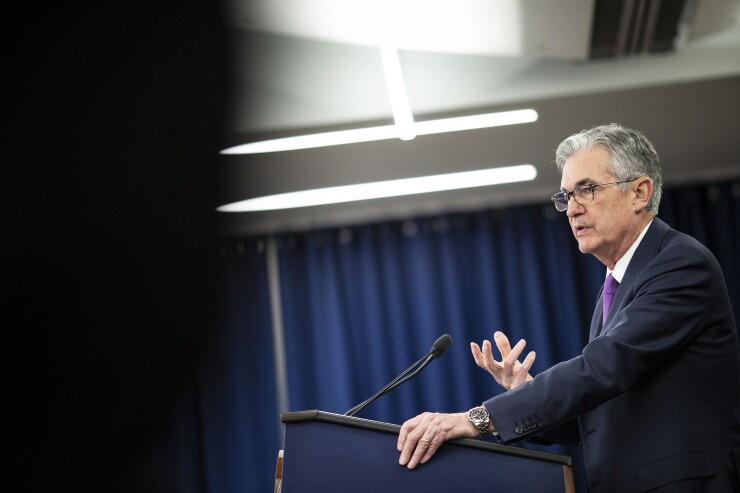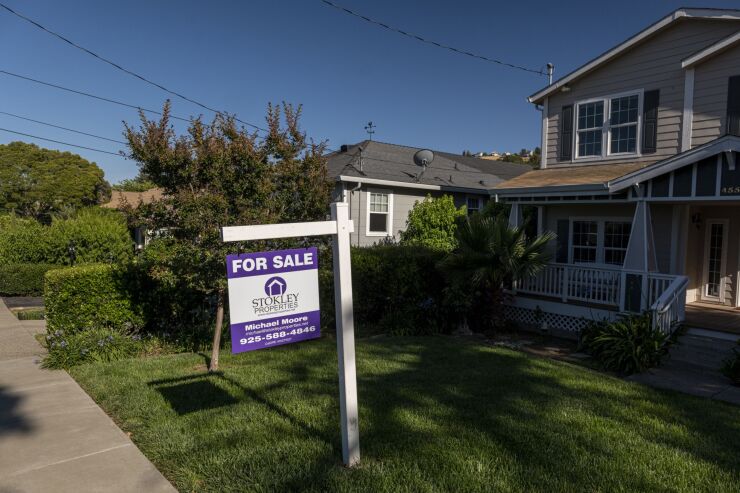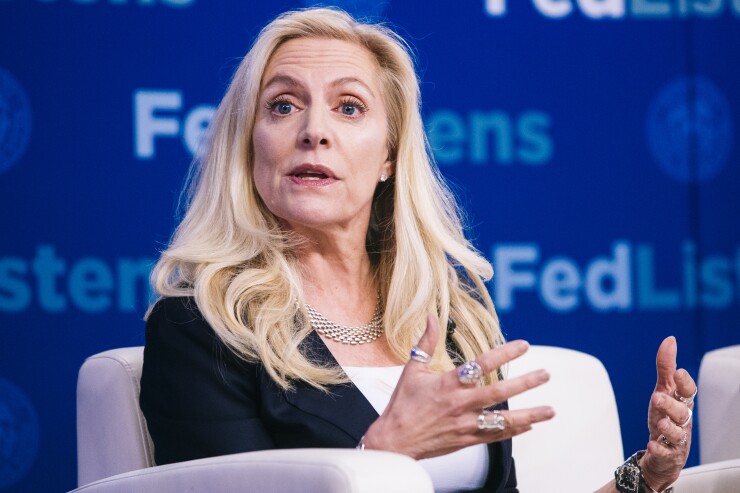As the Federal Reserve weighs another supersized rate increase this year, fears are mounting that the central bank's monetary actions could needlessly
Instead of hiking its benchmark interest rate by 75 basis points for a fourth consecutive Federal Open Market Committee meeting, some economists are urging the Fed to slow the rate of increases or even pause them altogether to allow the economy to absorb them.
"The market expectations are 75 [basis points], 75 [basis points], 50 [basis points], 25 [basis points]. That is so much given where we're at," Claudia Sahm, founder of Sahm Consulting and a former Fed economist, said. "My base case is not that U.S. financial markets break, and yet, the probability of that is rising. If they continue to be so aggressive, every 75 [basis point hike] they raise the chances of financial instabilities."

Part of the problem, economists say, is Fed Chair Jerome Powell's commitment to continuing to tighten monetary policy until the personal consumption expenditures, or PCE, index — a measure of inflation that takes out volatile factors such as energy and food — and the labor market show sustained signs of cooling down. But because those indicators often lag shifts in the real economy, tightening monetary policy aggressively until they change risks an overcorrection, Sahm said.
If the Fed wants proof that its monetary policies are working, she noted, it
"It is clear that how much the Fed has raised interest rates has already had a really big effect in the places where they show up first: the housing market," Sahm said. "If they had not painted themselves in a corner with [PCE] or bust, then they could easily have told that story."
Sahm said she would like to see a pause on interest rate hikes, but does not expect that to occur unless a crisis emerges.
Diane Swonk, chief economist at KPMG, said the Fed should take heed of the changes to the housing market, not only because it is among the most interest rate-sensitives sectors of the economy, but also because of the knock-on effects associated with it. Fewer home purchases mean fewer related big ticket purchases such as appliances, furniture and automobiles, she said, and declines in values make homeowners less willing to dip into savings.
Swonk said she would like to see the Fed increase its policy rate by 50 basis points next week and see how markets react.
Swonk said she does not believe a housing market collapse would be enough to disrupt financial stability on its own. Unlike the housing bubble of the mid-aughts, homeowners have more equity in their homes and mortgage underwriting is more sound, she said, adding that the Fed has made sharp housing market declines a staple of its stress test scenario, which all the large banks

Still, Swonk said, the Fed should note how significantly its policy rate changes are being felt at home and consider that its ripple effects could be far more significant abroad.
"Like it or not, the Federal Reserve is also the de facto central bank to the rest of the world and it is exporting inflation via the dollar," she said. "These are important things to take into account. Financial stability is the uncomfortable third leg of the dual mandate."
Following the Fed's
Historically, the Fed has kept its monetary and financial stability considerations separate. While it monitors threats posed by and to banks — both individually and
Swonk points to the Latin American debt crisis of the 1980s that resulted from monetary changes made under then-Fed Chair Paul Volcker. Others blame a series of sovereign debt crises that arose in the 1990s to a period of tightening overseen by then-Chair Alan Greenspan. While those incidents had minimal residual impacts on the U.S. at the time, the increasing globalization of the financial system could raise the stakes this time around.
"We are now in a different world. It's not the 1980s; we are much more financially intertwined than we ever were," Swonk said. "Even as countries pull back from each other and want to be self-sufficient, independent of each other and more protectionist … we're much more connected than we've ever been on a financial basis."
So far this year, the Fed has raised interest rates by 3 percentage points and shed more than $200 billion from its balance sheet — an exercise that has driven mortgage prices up even more by ending the Fed's role as a buyer of mortgage-backed securities.
In public remarks, Fed governors have been steadfast in their commitment to bringing down inflation, often noting that further tightening will likely be necessary. But, in recent weeks, some officials have given voice to the stability risks at play.
On Sept. 30, Fed Vice Chair Lael Brainard gave a speech on financial stability considerations for monetary policy, in which she noted that financial conditions around the world are tightening at a historically rapid pace and that such activities can be particularly damaging to emerging economies.
"The Federal Reserve's policy deliberations are informed by analysis of how U.S. developments may affect the global financial system and how foreign developments in turn affect the U.S. economic outlook and risks to the financial system," Brainard said "We engage in frequent and transparent communications with monetary policy officials from other countries about the evolution of the outlook in each economy and the implications for policy."

In another speech, on Oct. 10, Brainard said the "combined effect of concurrent global tightening is larger than the sum of its parts," and policy changes could challenge existing financial vulnerabilities.
Federal Reserve Board of Kansas City President Esther George, a voting member of the FOMC this year, has already expressed concern that the Fed could be moving too quickly in its policy changes. In June, she said she voted against the committee's first 75-basis-point increase of the year, out of concern that it would create "policy uncertainty."
This month, George reiterated those concerns in a webinar hosted by S&P Global.
"While my expectation is that rates will have to move higher for a sustained period, I do see risks around moving too abruptly to this new, higher level," she said. "Moving too fast can disrupt financial markets and the economy in a way that, ultimately, could be self-defeating, and although policy changes move pretty quickly to financial markets, the impact on the real economy occurs with a lag."
George said rapid changes increase rate risk for banks. She also pointed to the sharp change in mortgage pricing as one of many indications that financial markets have already responded to the Fed's policy adjustments.
Despite these indicators and acknowledgments, some economists fear the Fed would rather run the risk of going too far to shut down inflation than not going far enough.
Kenneth H. Thomas, president of Community Development Fund Advisors and former finance faculty at the University of Pennsylvania's Wharton School, said because the FOMC was late to addressing inflation this year, its members — specifically Powell — feel pressure to make up for lost time.
"Everyone agrees 'transitory' Jay Powell moved too slowly last year and overcompensated by moving too quickly this year," Thomas said. "Since the housing industry always bears the brunt of monetary policy, all such industry indicators suggest [Powell] has done most of his anti-inflation job and must now allow their record rate increases to work."





